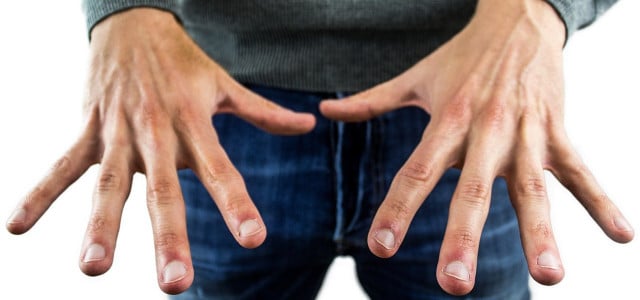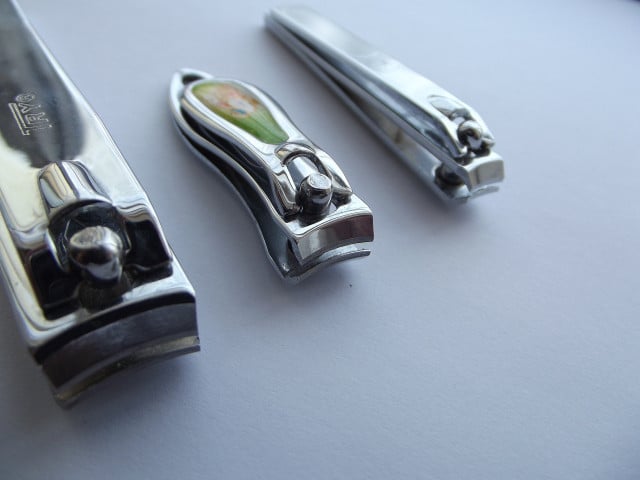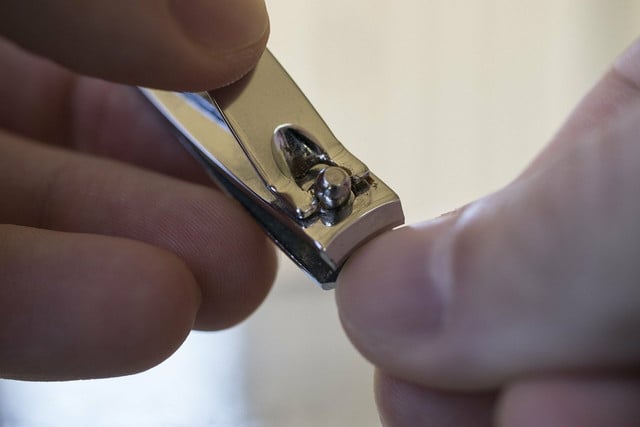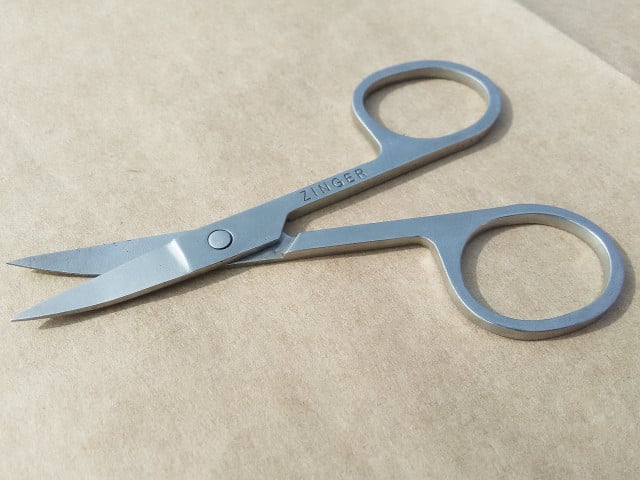
Trimming your fingernails regularly is important to keep them healthy. To prevent your nails from becoming brittle or inflamed, you should pay attention to a few things when cutting them. Here’s how to do it right.
You can trim your fingernails to shorten or shape them. Regular nail care is important so that the nails do not become too long and brittle. However, there are a few things to watch out for when clipping your fingernails. Here we explain the five most common mistakes and how to proceed correctly instead.
By the way: In our article Nail care: tips for beautiful and well-groomed fingernails you will find further valuable care tips.
1. Preparation and timing

(Photo: CC0 / Pixabay / PublicDomainPictures)
If you want to cut your fingernails, you should watch for the right time. A common mistake is to trim nails when they are very soft, such as after a shower or bath. Then the nails are softened by the moisture and very sensitive. It is better to wait until the fingernails are dry again.
Tip: Just wash your hands before cutting to keep them clean and free of bacteria. Then dry your hands well and start grooming your nails.
How often you should trim your fingernails depends on a variety of factors. On average, fingernails grow about three millimeters per month. However, this varies with the season, age and lifestyle. It is therefore best to find a routine that suits you and your nails individually.
2. Cut fingernails: This tool is appropriate

(Photo: CC0 / Pixabay / saulhm)
Using unsuitable or dirty tools is a mistake you should definitely avoid when cutting your fingernails. You have these tools at your disposal to cut your nails:
- nail scissors
- nail file
- nail clippers
The nail file is best suited. It is the most gentle on the nail plate, as it does not split it up as quickly. Choose a nail file made of glass or natural materials. Files made of metal or with a coarse blade can chip nails more quickly.
If you want to go faster, then prefer nail clippers to nail scissors. Scissors are more likely to splinter. Moisture can then penetrate into the small cracks and lead to infections.
When trimming your fingernails, always make sure your tool is clean and free of bacteria. It is best to clean it before each use.
3. File in one direction only
If you want to shorten your fingernails, this works particularly well with a file. However, avoid splitting the nails by rubbing them back and forth vigorously.
How to properly trim your nails with a file:
- Work from the side of the nail towards the center of the nail.
- When filing, make long strokes along the edge of the nail.
- Finally, file in one direction only to make the edge smooth.
Tip: Even if you work with a clipper or scissors, you should file again after trimming your nails. This way you avoid sharp edges or corners on the nails.
4. Don’t cut your fingernails too short

(Photo: CC0 / Pixabay / DaModernDaVinci)
A common mistake is to cut your fingernails too short. This happens particularly quickly with scissors or clippers. Avoid trimming the nails down to the skinline. This can lead to infection and inflammation.
By the way: The place where finger and nail connect is also called the intermediate nail. If you cut too radically, you can injure this area and bacteria can penetrate the skin.
It is also important not to clip the nails completely on the sides. If you cut them too short on the side, they can grow in or lead to inflammation of the nail bed.
This is how you do it correctly: When cutting, only shorten your fingernails so far that about two millimeters of the white edge remain. On the side, the edge of the nail should still rest freely on the edge of the skin.
5. Cuticles and skin tears: You shouldn’t do this

(Photo: CC0 / Pixabay / menartimgdesing)
When you trim your fingernails, it’s often tempting to remove cuticles and broken skin in the process. However, this is a mistake you should avoid.
Skin cracks on the nail sides are also called hangnails. They are usually uncomfortable and invite you to tear them off. However, you can easily injure the skin, which then quickly leads to inflammation.
Even cuticles are not always welcome. However, it is important to protect the nail. Therefore, never remove them too radically. You can find more tips here: Removing cuticles: You should pay attention to this.
Here’s what you can do instead to get rid of hangnails and cuticles:
- Cut hangnails cleanly with nail scissors. Make sure the scissors are sharp and clean.
- Gently push back cuticles if necessary. There are special tools for this. Scissors or nail clippers are not suitable for this.
Brittle nails make it difficult to trim and shape fingernails. Find out in our guide what you can do with home remedies for brittle nails.
Read more on Techzle.com:
- White spots on the fingernails: What is really behind it
- Biting your nails: causes and how to stop it
- Longitudinal grooves in the fingernails: why they occur